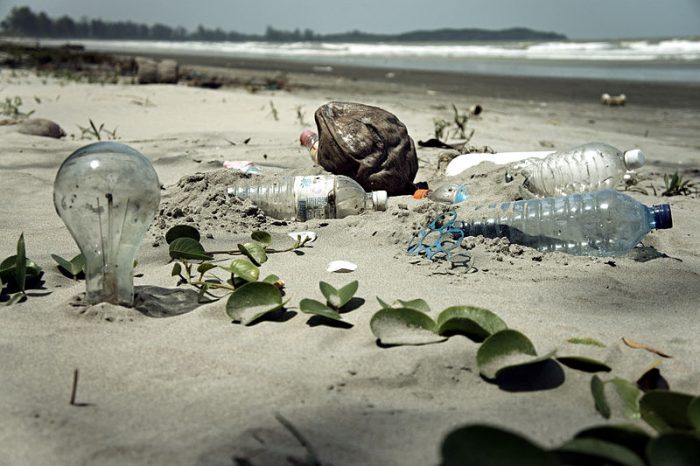A new study has found that up to 21 million tonnes of microplastics are currently floating in the Atlantic Ocean alone.
The findings, published in the journal Nature Communications, are part of the landmark study conducted by the United Kingdom’s National Oceanography Centre. Using state-of-the-art spectroscopic imaging technology, researchers analyzed microplastic concentrations in the upper 200 metres of the ocean during their expedition from the UK to the Falkland Islands, making it the only study to have done so across the entire Atlantic.
“Previously, we couldn’t balance the mass of floating plastic we observed with the mass we thought had entered the ocean since 1950,” says Dr. Katsiaryna Pabortsava, lead author of the paper. “This is because earlier studies hadn’t been measuring the concentrations of ‘invisible’ microplastic particles beneath the ocean surface.”
Researchers say that anywhere between 12 and 21 million tonnes of microplastics are floating in the Atlantic, which is comparable to the amount of plastic experts believe have entered the ocean over the past 65 years.
But the study only includes three of the most common types of plastics — polyethylene, polypropylene and polystyrene. This suggests that previous estimates of ocean plastic pollution have been severely underestimated.
“Extrapolate these microplastic tallies and you start to build a picture of an ocean positively corrupted with synthetic particles,” says Pabortsava.
Plastic pollution is not something that is new. Over the past 70 years, plastic production has increased nearly 200-fold, which translates to a total production of over 8.3 billion tonnes. This is especially problematic as only 9% of plastics are properly recycled, with the rest accumulating in landfills and our oceans.
Plastic waste comes in a variety of sizes, but those that are less than 5 millimeters in length are classified as microplastics. They are either synthetically made or derived from larger pieces of plastic that break down into tiny fragments, making them nearly invisible to the naked eye.
Studies have shown that only 1% of all plastics in our oceans remain as visible, floating pieces of debris. This means that the other 99% currently resides in the deep ocean, making the seafloor a major sink for these tiny microplastics.
“The size of the microplastics is extremely important because they get into the smallest fish and invertebrates, which are then consumed by larger fish,” says Professor Karen Burke Da Silva, a conservation biologist from Flinders University. Many of these plastic particles are composed of toxins like polychlorinated biphenyls (PCBs) and bisphenol A (BPA) which can enter marine food webs and eventually reach humans through consumption.
While studies have shown that microplastics harm reproductive systems, stunt growth and cause liver and tissue damage in marine organisms, their effects on human health remain unclear. Plastics have become so prevalent in our daily lives that scientists have found microplastics in our air, drinking water and food. In the United States, it is estimated that Americans ingest at least 74,000 microplastic particles every year.
“In order to determine the dangers of plastic contamination to the environment and to humans we need good estimates of the amount and characteristics of this material, how it enters the ocean, how it degrades and then how toxic it is at these concentrations”, says Professor Richard Lampitt, co-author of the study.
“This paper demonstrates that scientists have had a totally inadequate understanding of even the simplest of these factors, how much is there, and it would seem our estimates of how much is dumped into the ocean has been massively underestimated.”
For The Yucatan Times
Zachary Huang-Ogata
—
Zachary Huang-Ogata is a freelance writer specializing in science and the environment. His interests lie in sustainable resource management and corporate sustainability.



